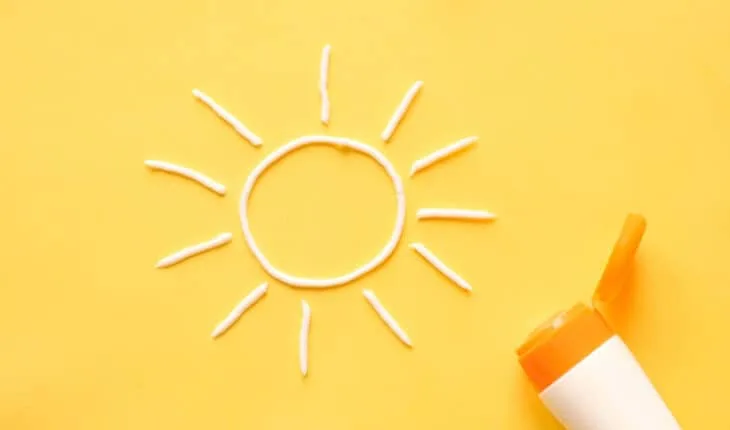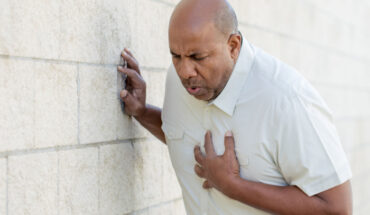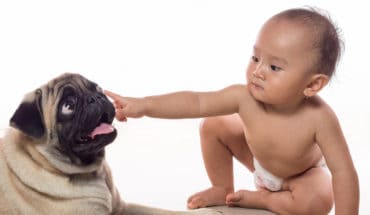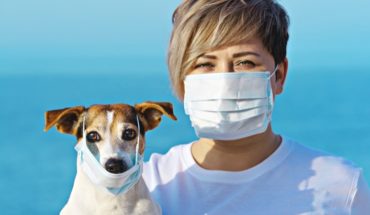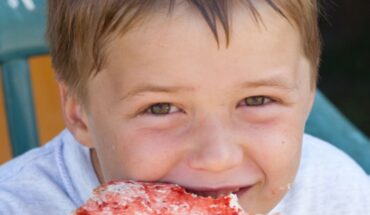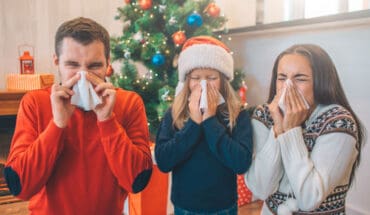Hot summer days can be lovely, providing you have the opportunity to enjoy them and are able to cool down and remain well hydrated. Heat exhaustion can come on suddenly following exposure to the sun and can have serious consequences especially for children and babies.
In this article, we give you top first aid advice for keeping your family safe in the sun this summer.
What are the signs of heat exhaustion?
According to NHS online, the signs of heat exhaustion include:
- A headache
- Dizziness and confusion
- Loss of appetite and feeling sick
- Excessive sweating and pale, clammy skin
- Cramps in the arms, legs and stomach
- Fast breathing
- Temperature of 38C or above
- Being very thirsty
The symptoms are often the same in adults and children, although children may become floppy and sleepy.
If someone is showing signs of heat exhaustion, they need to be cooled down.
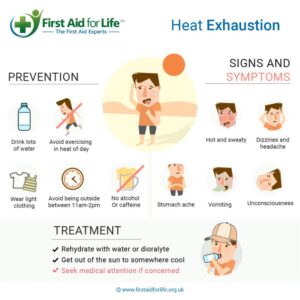
heat exhaustion
Caring for children in the sun
Babies over six months old can enjoy a limited amount of sunlight, providing they have been protected by the appropriate measures. It is especially important to protect younger ones from harmful UV rays as those who are burned as young children are 80% more likely to develop melanoma (a form of skin cancer) later in life.
Here are our top tips for keeping your baby or child safe from the risks of burning or overheating:
Clothing Matters
Choose tight-weaved clothing that covers the baby’s whole body. Look for garments with a UPF of 50 which will block 98% of UV radiation.
Don’t Forget the Caps
Choose wide-brimmed sun hats (not caps) which will cover your baby’s neck and ears too.
They should also wear sunglasses to protect their eyes.
Sunglasses are for Babies Too
Sunglasses should meet the British Standard (BSEN 1836:2005) and carry the CE mark – check the label. This is because the UV rays can cause eye damage to a baby’s young eyes.
Keep drinking!
Continually encourage little ones to drink lots of water as dehydration can quickly lead to heat exhaustion.
Heat exhaustion can come on suddenly following exposure to the sun. The child may have a raised temperature, feel sick, dizzy, have a headache, or stomach ache and it can result in them collapsing.
First Aid tip: Take them out of the sun and help them to re-hydrate quickly, ideally with Dioralyte, water or an isotonic sports drink. Regular small sips of water are better than gulping it. Seek medical advice if concerned.
Fully breastfed babies should not need to be given extra water – but do check for any signs of dehydration, by looking at their fontanelle (the soft part on the top of a very young babies head, however this is often not visible beneath their hair) This will sink if they’re dehydrated. Also, how quickly their skin pings back if you gently pinch it. Babies under 6 months, who are not breastfeeding, should be regularly given cooled boiled water. Over six months of age, they can be given regular water.
Remember that mother’s will need to replenish their fluids too.
Sleeping Atmosphere
In summer, it is best to create a cool sleeping environment for your baby. Place your baby feet to the foot of the cot, on a flat mattress without blankets or pillows.
Have a thermometer for your baby’s room and move them to another room if theirs is too warm.
Be careful how you cover your pram
When out and about in the summer with your baby in a buggy or pram, sleep can be more problematic. Don’t be tempted to put a blanket over the pram to block out the sunlight as this can trap warm air within the buggy, causing the temperature to soar to dangerous levels. It is really important that air is able to circulate.
Instead ideally opt for a mesh pram cover that will block out sunlight and allow air to circulate. Always ensure you park your buggy in the shade and keep checking to ensure it remains shaded and cool.
Clouds are no match for UV rays
Remember, you can still get burned in the shade. Sun protection remains essential even on overcast days. If the temperature seems low to you, remember that it could still affect a young baby or child.
Don’t Forget the Impact of Water
Many people do not know that if you are on or near a body of water, this will dramatically increase the potency of the sun’s rays. Sun cream should be reapplied after swimming.
Paddling pools
There is nothing better on a hot day than cooling off in the paddling pool. However please be aware that residual water in the hosepipe can become piping hot and able to seriously burn your child.
Children should always be continually watched when in the paddling pool. Drowning is quick and silent and they can drown in a surprisingly small amount of water. Please read our article on drowning and water safety.
Remember that residual water in a hosepipe will be heated by the sun. Always spray out remaining water before doing water play with your child. Many children have been burned by scalding water squirted from a hosepipe.
Don’t burn! Key steps summarised:
The sun’s UV rays can quickly damage children’s skin, even on a cloudy day.
To avoid sunburn:
- Always ensure children are wearing appropriate sunscreen, apply liberally over face and body and re-apply every 2-3 hours
- Take particular care if swimming or boating as water intensifies the sun’s rays
- Dress the children in tightly woven opaque clothes ideally with a sun factor rating
- Regularly go indoors or move into shade
- Check the weather online and avoid being in the sun when the sun’s rays are strongest
- Wear a hat, ideally with an SPF factor, wide brim and ear cover
- Put on sunglasses
- Protect little ones in the car and buggy too and invest in sunshades
Babies with very pale skins are most at risk from burning, however, babies with darker skin are still susceptible to sun damage and can burn.
If a child is sunburnt they will need medical attention:
First Aid tip: Cool under a tepid shower or cool running water for at least 20 minutes. When completely cooled, apply neat Aloe Vera gel to the affected area, this will soothe, reduce swelling and promote healing. Give the child plenty to drink and Calpol for the pain. Seek Medical advice. If the burned area is large or blistered it is really important to get them seen by a doctor and the burn dressed appropriately. They are also likely to experience heat exhaustion.
Heat stroke – what it is and how to help:
People often refer to heat exhaustion as heat stroke, however heat stroke is far more serious than heat exhaustion and someone with heat stroke should always be seen by a health professional as quickly as possible. Heat stroke is when the body is unable to produce sweat and therefore is unable to cool itself down. With heat stroke, the body’s temperature control mechanism fails and your temperature keeps rising to dangerously high levels – sometimes beyond 40C!
Symptoms of heat stroke include:
- High temperature (over 103 F)
- Rapid/strong pulse or heart rate
- Loss or change of consciousness
- Hot, red, dry or moist skin
This is a medical emergency and you should seek medical advice immediately.
Nose bleeds – how to help
Nose bleeds are frequent problems in hot weather as the small blood vessels in noses can dilate and burst when they get warm. They are particularly prevalent for small children, pregnant ladies and also when undertaking sport or additional exertion in the heat.
If someone has a nose bleed:
- Sit them down
- Grab something to catch the blood
- Lean them forward pinching the bridge of the nose. Leaning them forward whilst applying pressure to the nose will allow you to see when the bleeding has stopped and will avoid the blood trickling down the back of their throat which could make them sick. You should apply pressure to try and push the leaking blood vessel against the inside of the nose to stop it bleeding
- Keep changing your grip until you have got to a point where no blood is coming out.
Apply pressure for at least 10 minutes - Release pressure slightly and if it starts to bleed again hold for another 10 minutes and then another
You will need medical help if it really won’t stop bleeding.
Advise them not to pick, poke or blow the nose. If it starts again you will have to apply pressure once more.
Fainting
Fainting is a brief loss of consciousness caused by a temporary reduction to the blood flow of the brain.
It can be a reaction to pain, lack of food, exhaustion or emotional stress. People often feel faint because it is warm or they have been exercising and then stop; the small blood vessels in their skin have become dilated and the blood begins to pool in their feet.
Lying down and raising the legs will improve the circulation and redirect the blood to the brain. They should begin to feel better or regain consciousness quickly – if they don’t, you will need to put them into the recovery position.
They may need to eat and drink something in order to recover completely. If you are concerned that the collapse may be due to anything other than a faint (such as a stroke), or they have injured themselves when they fell – get medical assistance.
- What is a seizure? - 13th March 2025
- Febrile Convulsions and Seizures in Children - 13th March 2025
- Why women are less likely to receive CPR or survive cardiac arrest - 6th March 2025
